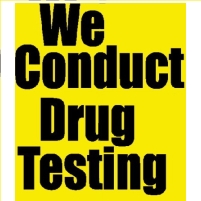Florida Tests Show Welfare Recipients Less Likely to Use Illegal Drugs
Monday, August 29, 2011

Florida’s highly-publicized drug-testing experiment for welfare recipients has so far not produced the results proponents anticipated. In fact, the welfare applicants are testing positive at a lower rate than the general population of the state.
Republicans led by Governor Rick Scott adopted legislation this year that mandated anyone seeking welfare assistance pay for drug testing. The assumption behind the plan was that this segment of the population was likely to use illegal substances, and that the state shouldn’t provide help to those getting high.
Well, since July 1, when the new law went into effect, about 1,000 applicants have submitted to the screening—and only 2% of them tested positive.
Another 96% proved to be drug-free, leaving the state on the hook to reimburse them for the testing, as required under the law.
According to a 2008 survey by the Office of National Drug Control Policy, 8.1% of Floridians age 12 or older use illegal drugs.
That cost is estimated to be $30,000 to $40,000.
But supporters of the law insist the state may still break even, by not having to disburse money to drug-users who don’t get into the program. They argue that the low positive rate is due to drug users refusing to take the tests. Others suggest that welfare applicants are less likely to take illegal drugs for the simple reason that they can’t afford them.
Meanwhile, a lawmaker in Rhode Island, Republican Doreen Costa, wants her state to adopt its own law modeled after Florida’s drug-testing program for welfare applicants.
-Noel Brinkerhoff, David Wallechinsky
Welfare Drug-Testing Yields 2% Positive Results (by Catherine Whittenburg, Tampa Tribune)
- Top Stories
- Unusual News
- Where is the Money Going?
- Controversies
- U.S. and the World
- Appointments and Resignations
- Latest News
- Can Biden Murder Trump and Get Away With it?
- Electoral Advice for the Democratic and Republican Parties
- U.S. Ambassador to Greece: Who is George Tsunis?
- Henry Kissinger: A Pre-Obituary
- U.S. Ambassador to Belize: Who is Michelle Kwan?






Comments